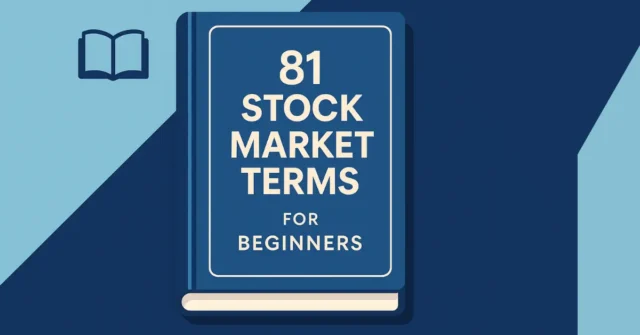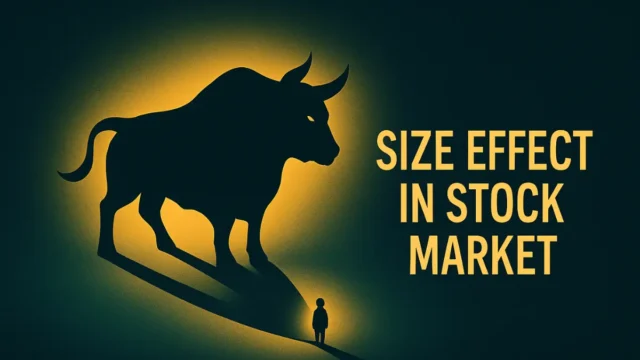Follow Us
15 Best Books on Value Investing for Beginners, Pros & Beyond
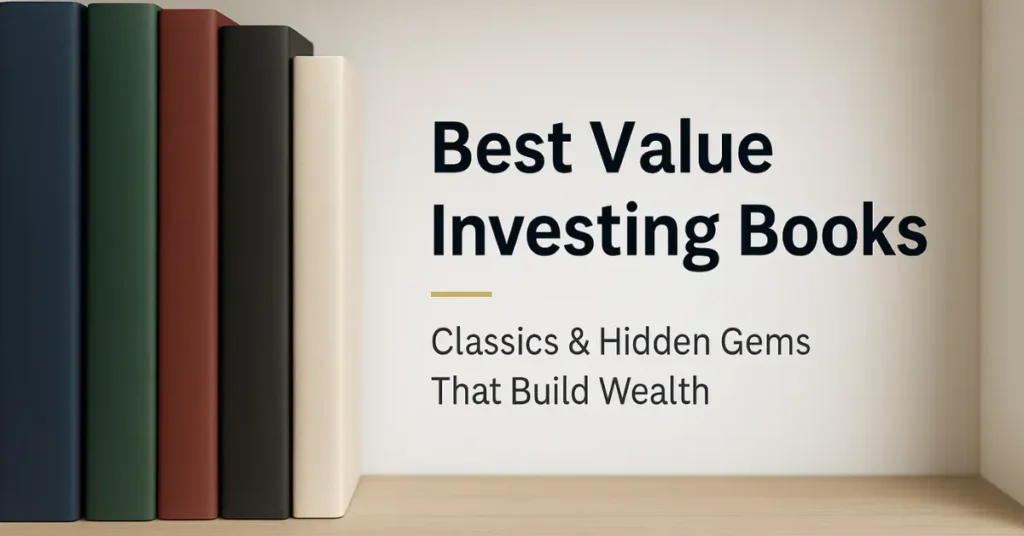
Table of Contents
- Why Books Still Matter in Value Investing
- Best Books on Value Investing – Quick Reference Table
- Best Books on Value Investing: Classics & Hidden Gems You Can’t Miss
- 1. The Intelligent Investor – Benjamin Graham
- 2. The Little Book That Beats the Market – Joel Greenblatt
- 3. Common Stocks and Uncommon Profits – Philip Fisher
- 4. One Up on Wall Street – Peter Lynch
- 5. The Essays of Warren Buffett – Compiled by Lawrence Cunningham
- 6. The Warren Buffett Way – Robert Hagstrom
- 7. The Dhandho Investor – Mohnish Pabrai
- 8. The Most Important Thing – Howard Marks
- 9. Security Analysis – Benjamin Graham & David Dodd
- 10. Margin of Safety – Seth Klarman
- 11. The Manual of Ideas – John Mihaljevic
- 12. Value Investing: From Graham to Buffett and Beyond – Bruce Greenwald
- 13. Quality Investing – Lawrence Cunningham, Torkell T. Eide & Patrick Hargreaves
- 14. Narrative and Numbers – Aswath Damodaran
- 15. Value Investing & Behavioral Finance – Parag Parikh
Why Books Still Matter in Value Investing
In a world dominated by social media hot tips and stock screeners, its easy to think books are outdated.
But when you look at Warren Buffett, Charlie Munger, or Peter Lynch, their foundation didn’t come from quick tweets or TikToks. It came from reading deeply.
Books don’t just tell you what to buy. They sharpen judgment, discipline & perspective. A 300-page book can give you frameworks that last decades, while a blog post or news headline might only last a trading week.
That’s why the greats still recommend going back to Graham, Fisher, or Buffett’s writings, because the principles of value investing don’t change, only the market cycles do.
Best Books on Value Investing – Quick Reference Table
| # | Book | Author(s) | Level |
|---|---|---|---|
| 1 | The Intelligent Investor | Benjamin Graham | Beginner |
| 2 | The Little Book That Beats the Market | Joel Greenblatt | Beginner |
| 3 | Common Stocks and Uncommon Profits | Philip Fisher | Intermediate |
| 4 | One Up on Wall Street | Peter Lynch | Beginner–Intermediate |
| 5 | The Essays of Warren Buffett | Compiled by Lawrence Cunningham | Intermediate |
| 6 | The Warren Buffett Way | Robert Hagstrom | Beginner–Intermediate |
| 7 | The Dhandho Investor | Mohnish Pabrai | Intermediate |
| 8 | The Most Important Thing | Howard Marks | Intermediate–Advanced |
| 9 | Security Analysis | Benjamin Graham & David Dodd | Advanced |
| 10 | Margin of Safety | Seth Klarman | Advanced |
| 11 | The Manual of Ideas | John Mihaljevic | Advanced |
| 12 | Value Investing: From Graham to Buffett and Beyond | Bruce Greenwald | Advanced |
| 13 | Quality Investing | Cunningham, Eide & Hargreaves | Advanced |
| 14 | Narrative and Numbers | Aswath Damodaran | Advanced |
| 15 | Value Investing & Behavioral Finance | Parag Parikh | Intermediate |
Best Books on Value Investing: Classics & Hidden Gems You Can’t Miss
1. The Intelligent Investor – Benjamin Graham
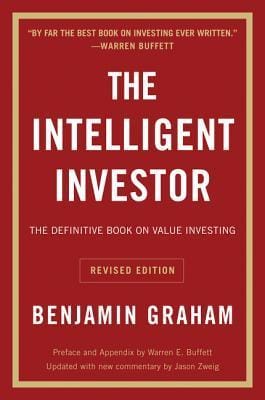
If you read only one investing book in your lifetime, this is it. Buffett called it “by far the best book on investing ever written.”
Best Parts:
Margin of Safety chapter: Graham’s central rule that you should only buy when there’s a significant gap between price and intrinsic value.
Mr. Market analogy, a brilliant metaphor showing the market as an emotional partner offering you prices daily, not a guide to truth.
Key Learnings:
This book is about mindset as much as mechanics. It teaches emotional discipline, patience, and how to see volatility as opportunity, not risk.
Who Should Read:
Every beginner, and frankly, every investor; because even veterans forget these lessons in euphoric bull runs.
2. The Little Book That Beats the Market – Joel Greenblatt
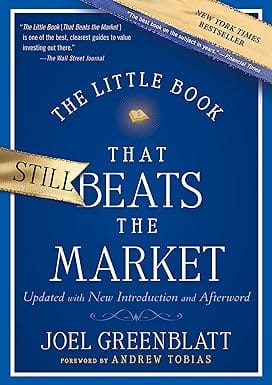
Greenblatt takes complex investing concepts and explains them so simply a middle schooler could follow along. His “Magic Formula” is legendary for its simplicity and effectiveness.
Best Parts:
The two-variable formula: buy companies with high earnings yield & high return on capital. It’s practical, easy to replicate, and backed by data.
Key Learnings:
Investing doesn’t need to be rocket science. A disciplined, rules-based approach can beat most fund managers who overcomplicate things.
Who Should Read:
Beginners who want an actionable system that doesn’t require advanced math or Wall Street jargon.
3. Common Stocks and Uncommon Profits – Philip Fisher
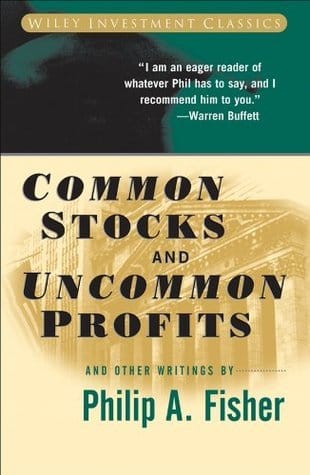
Philip Fisher approached investing differently, he focused less on numbers and more on people.
Best Parts:
Fisher’s famous 15 Points Checklist for evaluating management and company quality. For instance, how innovative is the company? How effective is management?
Key Learnings:
He showed that qualitative factors (like culture & innovation) are just as critical as balance sheet numbers. This is where growth investing meets value principles.
Who Should Read:
Investors who want to go beyond spreadsheets and learn how to evaluate the softer, qualitative side of businesses.
Related Post:
Buy and Hold Strategy: The Secret to Long-Term Wealth
4. One Up on Wall Street – Peter Lynch
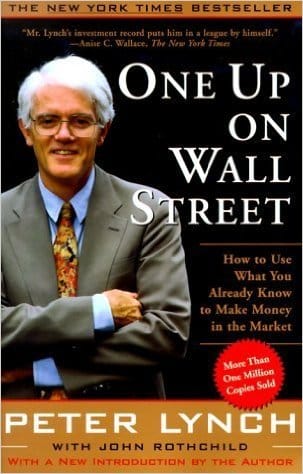
Peter Lynch managed Fidelity’s Magellan Fund to legendary returns. His book isn’t strictly value investing, but it offers practical, boots-on-the-ground wisdom.
Best Parts:
“Invest in what you know” philosophy, spotting winning companies through everyday life before Wall Street catches on.
Key Learnings:
Ordinary investors can have an edge by paying attention to products, stores, and brands they use daily.
Who Should Read:
Beginner to intermediate investors who want inspiration and practical observation skills, even if it’s more growth than value.
5. The Essays of Warren Buffett – Compiled by Lawrence Cunningham
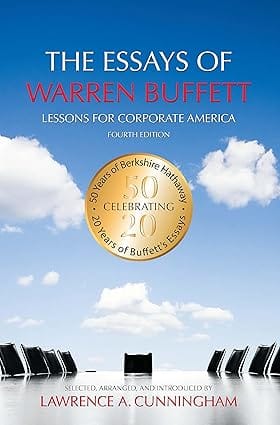
Reading Buffett’s annual letters is like having a one-on-one masterclass in value investing every year. Cunningham distilled decades of these letters into themes, making it easier to digest.
Best Parts:
Buffett’s candid thoughts on corporate governance, capital allocation, and why moats matter. His explanations of shareholder alignment and business partnerships are pure gold.
Key Learnings:
You see Graham’s principles in action, but with the added layer of Buffett’s wit and practical wisdom. It bridges theory and practice better than almost any book.
Who Should Read:
Intermediate investors who understand the basics but want to see how principles are applied in the real world.
Buffett shows how wealth compounds over time – use our Future Value Calculator to see it in action
6. The Warren Buffett Way – Robert Hagstrom
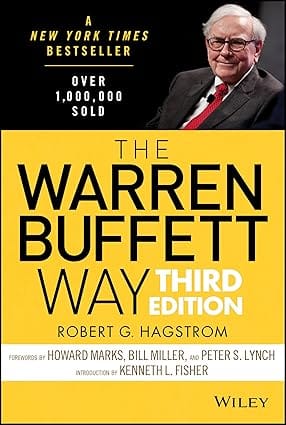
This book compiles Buffett’s principles into a structured guide. While it overlaps with The Essays of Warren Buffett, it’s more narrative and biographical.
Best Parts:
Clear breakdown of Buffett’s strategy: focus on moats, management quality, and buying great businesses at fair prices.
Key Learnings:
Reinforces Buffett’s evolution from Graham-style “cigar butts” to owning high-quality businesses for the long run.
Who Should Read:
Readers who want a narrative overview of Buffett’s style without digging through decades of letters.
7. The Dhandho Investor – Mohnish Pabrai
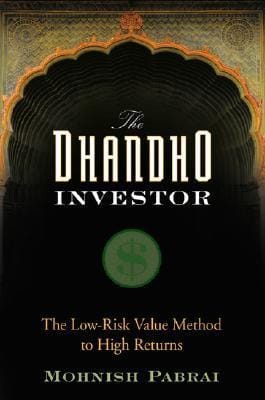
Mohnish Pabrai is often called a Buffett disciple, but he is not just parroting Graham or Buffett, he distills their strategies into simple, memorable rules.
Best Parts:
The core idea: “Heads I win; tails I don’t lose much.” Pabrai emphasizes asymmetric bets where the downside is limited, but the upside can be massive.
Key Learnings:
Pabrai shows how to look for low-risk, high-uncertainty investments. He makes value investing feel accessible, showing you don’t need to overcomplicate to achieve Buffett-like returns.
Who Should Read:
Investors looking for a practical, modern framework that combines Buffett’s wisdom with simplicity.
8. The Most Important Thing – Howard Marks
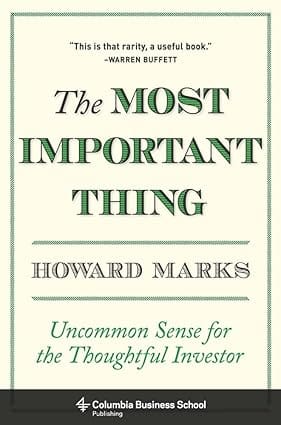
Howard Marks, co-founder of Oaktree Capital, is revered for his memos that even Buffett reads religiously. This book distills his decades of insights into timeless lessons.
Best Parts:
His chapters on risk, cycles, and second-level thinking. Instead of chasing returns, he teaches how to think differently from the crowd.
Key Learnings:
True value investors succeed not by predicting markets, but by assessing risk better than others. Marks drills home the importance of patience and humility.
Who Should Read:
Investors at all levels, this is less about mechanics, more about mindset, making it universally valuable.
9. Security Analysis – Benjamin Graham & David Dodd
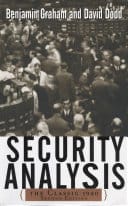
This is the heavyweight textbook of value investing. If The Intelligent Investor is the playbook, Security Analysis is the technical manual.
Best Parts:
The deep dive into balance sheet and income statement analysis, where Graham & Dodd spell out how to determine intrinsic value.
Key Learnings:
This book separates speculators from investors. It’s less about chasing trends and more about dissecting financials to understand the true worth of a business.
Who Should Read:
Advanced readers, analysts, and serious investors who want to understand valuation at its deepest level.
10. Margin of Safety – Seth Klarman

This is the holy grail of value investing books. Out of print and selling for a high price, it’s a rare gem that goes beyond Graham and Buffett.
Best Parts:
Klarman’s insistence on risk aversion. He reframes the game, not about chasing returns, but about avoiding permanent losses.
Key Learnings:
Investing success comes from humility: accepting uncertainty, preparing for mistakes, and always demanding a margin of safety. His lessons on distressed investing are especially powerful.
Who Should Read:
Advanced investors or anyone serious about professional-level investing. Even summaries of this book are worth their weight in gold.
11. The Manual of Ideas – John Mihaljevic
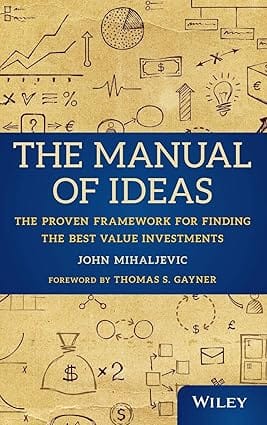
This book is more like a field guide for serious investors. Mihaljevic curates frameworks and insights from some of the world’s top value investors.
Best Parts:
Case studies and interviews with managers who have beaten the market using unique approaches. It’s almost like sitting in on a roundtable of elite value investors.
Key Learnings:
Idea generation is the lifeblood of value investing. Mihaljevic shows you how to sift through industries, screens, and strategies to consistently find undervalued stocks.
Who Should Read:
Intermediate to advanced investors who want to refine their process for spotting opportunities instead of waiting for tips.
12. Value Investing: From Graham to Buffett and Beyond – Bruce Greenwald
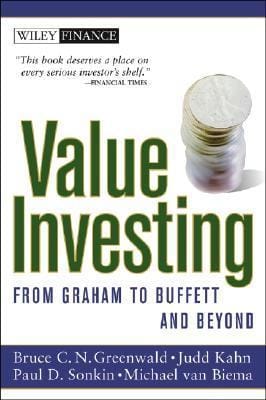
Bruce Greenwald’s book is often called the “modern bible” of value investing. It takes Graham’s original principles and updates them for today’s market realities.
Best Parts:
His framework for valuing earnings power, assets, and growth, he doesn’t just recycle Graham but explains how to adapt valuation methods in a changing economy.
Case studies of companies that thrived or failed depending on how investors judged intrinsic value.
Key Learnings:
Value investing isn’t static, it evolves with markets. Greenwald shows how to apply the timeless “buy undervalued” principle in industries shaped by intangibles, brand power & globalization.
Who Should Read:
Investors who already know Graham and Buffett but want to upgrade their toolkit for the modern era.
13. Quality Investing – Lawrence Cunningham, Torkell T. Eide & Patrick Hargreaves
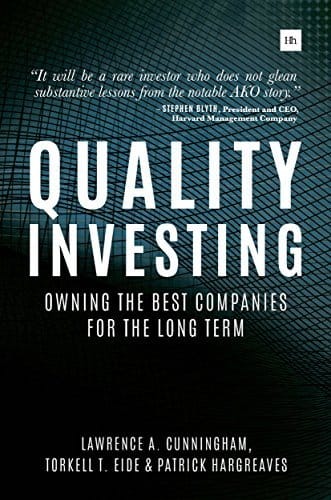
This modern classic shifts focus from just cheap stocks to quality at a fair price, aligning with how Buffett evolved later in his career.
Best Parts:
Their practical framework for identifying durable businesses with strong moats, excellent management, and consistent returns on capital.
Key Learnings:
Price matters, but quality compounds. Paying up for great businesses can be smarter than buying average businesses cheaply.
Who Should Read:
Intermediate to advanced investors looking to refine their ability to spot “wonderful companies at fair prices.”
14. Narrative and Numbers – Aswath Damodaran
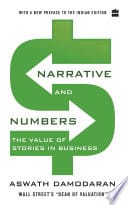
Aswath Damodaran, often called the “Dean of Valuation,” explores how stories and numbers together shape valuation.
Best Parts:
Case studies where narrative drives investor perception, like tech startups and how to balance story with hard data.
Key Learnings:
Valuation isn’t just formulas. A company’s story matters but it must be tested against financial reality. This is critical in today’s narrative-driven markets.
Who Should Read:
Advanced investors, especially those evaluating high growth or disruptive businesses where stories dominate headlines.
15. Value Investing & Behavioral Finance – Parag Parikh
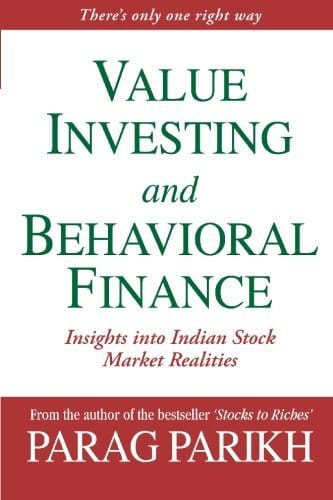
This one is a gem for Indian investors but has lessons applicable worldwide.
Best Parts:
Case studies of Indian companies that show how behavioral biases: herd mentality, fear, overconfidence, create mispricing.
How to align value investing with psychological awareness.
Key Learnings:
Even with perfect valuation skills, emotions can wreck returns. Parikh teaches how to combine behavioral finance with value discipline to avoid costly mistakes.
Who Should Read:
Investors in emerging markets, or anyone aware that the biggest enemy in investing is usually themselves.
Choosing the Right Book for You
With so many great books, where should you start? Think of it as a reading ladder:
- Beginner: The Intelligent Investor, The Little Book That Beats the Market
- Intermediate: Buffett’s Essays, Common Stocks & Uncommon Profits, The Dhandho Investor, Parikh’s Behavioral Finance
- Advanced: Security Analysis, Margin of Safety, Distress Investing, The Manual of Ideas, Greenwald’s Value Investing
This progression helps you build a foundation first, then layer in practical applications, and finally tackle niche or advanced frameworks.
Conclusion
The best value investing books aren’t about quick trades or hacks, they’re about shaping the way you think.
From Graham’s timeless margin of safety to Klarman’s risk-first mindset, to Pabrai’s simplified frameworks, the wisdom in these books gives you a lifelong edge.
Action Steps:
- Pick one book today that matches your level.
- Read with a notebook & extract key lessons.
- Apply them using real world companies you follow.
Final thought: The greatest investment is not the stocks you buy, it’s the wisdom you gain before risking a single dollar.
Disclaimer:
This content is for informational purposes only and should not be considered financial advice.
Read full Disclaimer.



